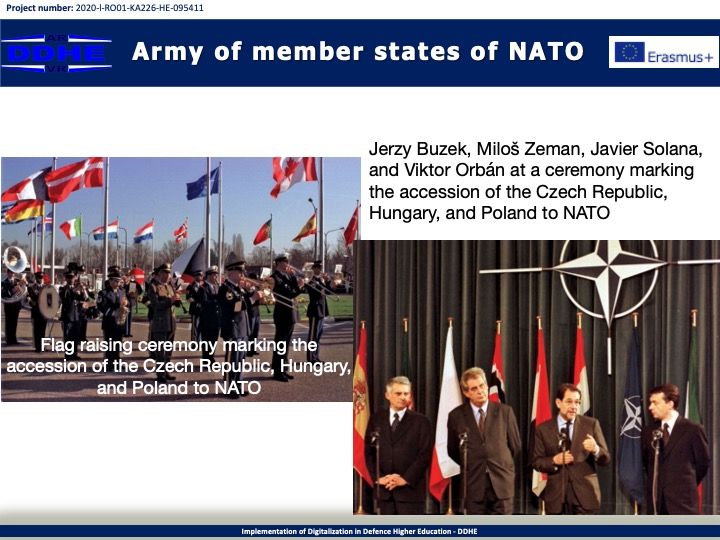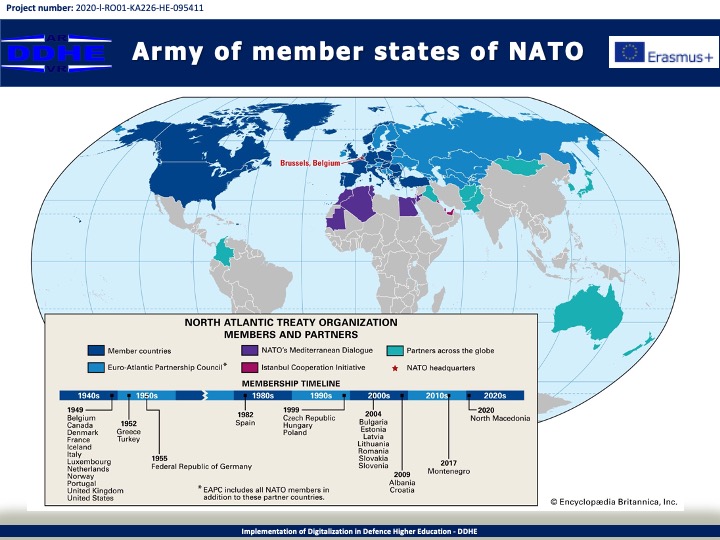The United States Army (USA) is the land service branch of the United States Armed Forces and part of the civilian-led Department of the Army, which is led by the Secretary of the Army. The military head of the U.S. Army is the chief of staff of the Army, who is assisted by the vice chief of staff of the United States Army and sergeant major of the Army. It was founded on 14 June 1775 as the Continental Army.
The U.S. Army is composed of the Regular Army, United States Army Reserve, and United States Army National Guard. The U.S. Army is organized into four army commands, which conduct the majority of the service's organize, train, and equip functions, ten Army service component commands, which command forces attached to the combatant commands, and twelve direct reporting units. The Army also organizes its personnel into 21 different basic branches.
U.S. Army M1A2 Abrams tanks from the 3rd Armored Cavalry Regiment maneuver in the streets as they conduct a combat patrol in the city of Tall Afar, Iraq, on Feb. 3, 2005.
The U.S. Army's field structure is broken into several subdivisions under its commands:
Army group: Only used during large scale wars or as part of multinational commands, consist of four to five field armies and 400,000 to 1 million soldiers. Usually responsible for directing campaigns in a certain geographical area and commanded by a general
Field army: Consists of two or more corps or more than four divisions and consists of up to 90,000 soldiers commanded by a general or lieutenant general.
Corps: Consists of two to five divisions and 20,000 to 45,000 soldiers commanded by a lieutenant general. A corps is the highest level of command that provides operational direction for combat operations, with higher levels concerned with administration rather than operations.
Division: Consists of three to four brigades and 10,000 to 15,000 soldiers commanded by a major general and are subdivided into airborne, armored, infantry, and mountain divisions. Each division conducts major tactical operations and sustained battlefield operations.
Brigade / Regiment / Group: Consists of two to three battalions and 3,000 to 5,000 soldiers commanded by a colonel. Armored and Ranger units are organized into regiments and Special Forces are organized into groups. In 2016, the Army reorganized its brigades into brigade combat teams, which are autonomous modular brigades that most commonly include one combat arms brigade and its assigned support and fire units.
Battalion / Squadron: Consist of four to six companies and consist of up to 1,000 soldiers commanded by a lieutenant colonel. Battalions are organized into combat arms battalions, combat support, and combat service support battalions by unit type. Armored and air cavalry are organized into squadrons. Battalions and squadrons conduct independent operations of limited scope and duration.
Company / Battery / Troop: Consist of three to four platoons and a few dozen to 200 soldiers commanded by a captain. Artillery is organized into batteries and armored and air cavalry units are organized into troops. Companies, batteries, and troops are tactical-sized units that can perform a battlefield function on its own.
Platoon: Consists of two to three squads and up to 36 soldiers led by a first lieutenant or second lieutenant.
Squad / Section: Consists of two teams and four to ten soldiers led by a staff sergeant.
Team: Consists of four soldiers and led by a sergeant or corporal.

